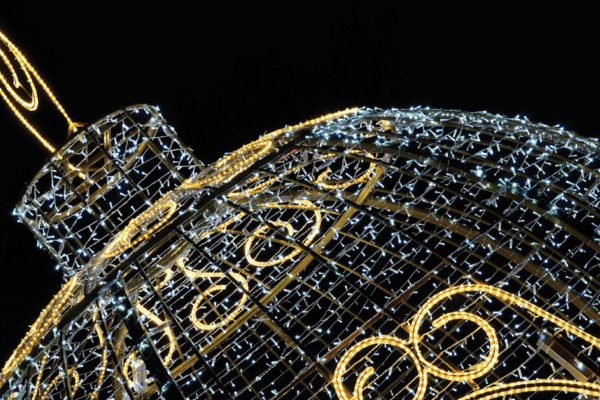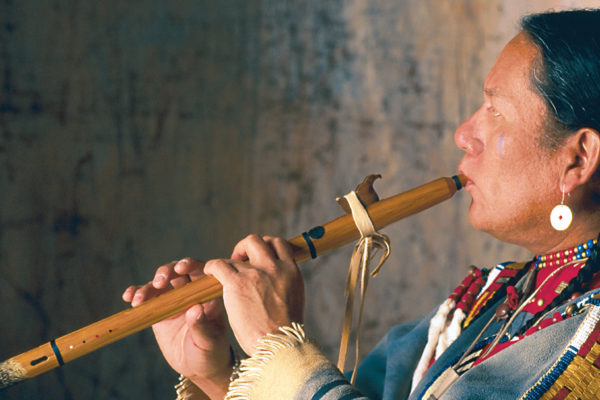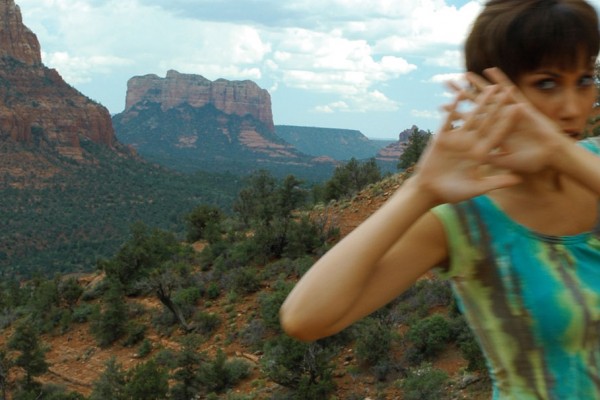Continued (page 2 of 2)
A 152-foot-tall tower built to house equipment for Operation Icecap, a never-completed 1992 underground test, stands lonely guard over Area 7 at Yucca Flat, demilitarized, but ready to perform its patriotic duty if the Cold War is ever reheated. Pockmarking the area for miles around it is a lunar surface of hundreds of subsidence craters made by earlier underground detonations. Varying in size and depth, these gaping pits were formed when explosions collapsed the ground above them. Then there’s the big daddy of them all, Sedan Crater, a leftover from 1962’s Operation Plowshare, which tested the use of nuclear bombs for peaceful industrial applications such as the construction of harbors and railroads. Three-hundred-twenty-feet deep and 1,280 feet wide, this old fission hole is viewable to the naked eye from space and is listed on the National Register of Historic Places.
About 7,500 feet from Ground Zero on Yucca Flat sits a scorched wooden house. Another family residence, this one made of brick, is located a half mile beyond it. In 1955, researchers famously erected these and 17 other dwellings of different styles and construction materials in order to study the damage effects of an above-ground atomic explosion on mid-century suburbia. The fully finished, furnished and operational homes – along with a public library, fire house and school – that made up this “Survival Town” were carefully staged to mimic the tiniest details of everyday life. Department store mannequins dolled up in their Sunday best were posed in living rooms as stand-ins for Mr. and Mrs. Average American and their 3.5 baby boomers. Kitchen pantries were stocked with cans of Grandma’s blue-ribbon apricot preserves. But there goes the neighborhood – blown into near-nothingness by a 29-kiloton detonation with almost twice the destructive power of the one that leveled Hiroshima. The two miracle houses that survived this brutal onslaught stand today as signposts marking the city limits of the only community in the U.S.A. ever subjected to nuclear obliteration.
The Nevada National Security Site may seem calm after The Bomb, but the bustling T-1 Site training area, spied through the windows of the bus as we drove past it, provided the single most unnerving moment of the day. Located not far from the spot where the Pony Soldier atomic device was detonated in 1952, the 10-acre range was reconfigured after 9/11 to become a training compound for first responders to nuclear terrorism. The installation is home to a crashed Boeing 737 passenger airliner, the broken fuselage scattered in pieces across the ground, along with a number of light aircraft, armored military vehicles, overturned cars, trucks, trailers, buses and derailed railroad cars. It’s here that state and local police officers, firefighters and public safety workers are taught to locate and deal with dirty bombs, a chilling reminder that the nuclear threat didn’t atomize with the end of the Cold War. It just adapted to changing times.
Applications to take the Nevada National Security Site public tour can be found online at nnss.gov/pages/PublicAffairsOutreach/ NNSSSiteTours.html. Reservations required. Space is limited and seats fill quickly.
MORE SEDONA ROAD TRIPS: Canyon de Chelly, Lake Powell, Havasu Canyon, photographing Arizona, 3 slot canyons, 10 places to go to beat the Arizona heat, Acoma Pueblo, Grand Canyon, The Wave, Oak Creek Canyon, Crown King, Jerome, Sunset Crater Volcano, Wupatki National Monument, Arizona animal parks, Monument Valley, Phoenix’s Musical Instrument Museum, Navajo National Monument, Mormon Lake



